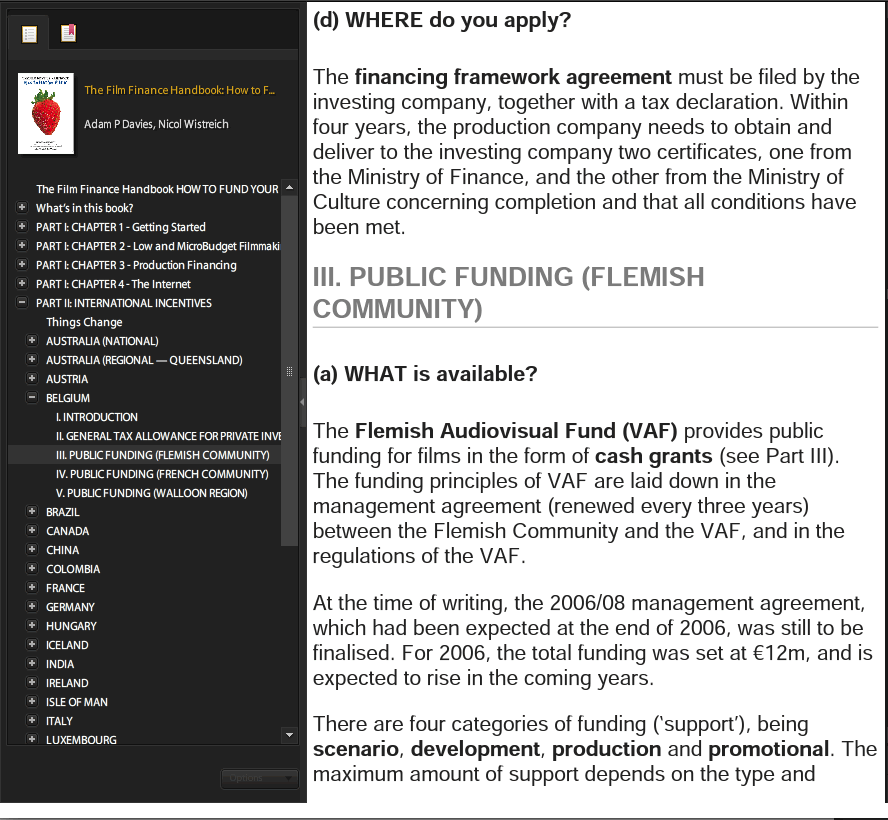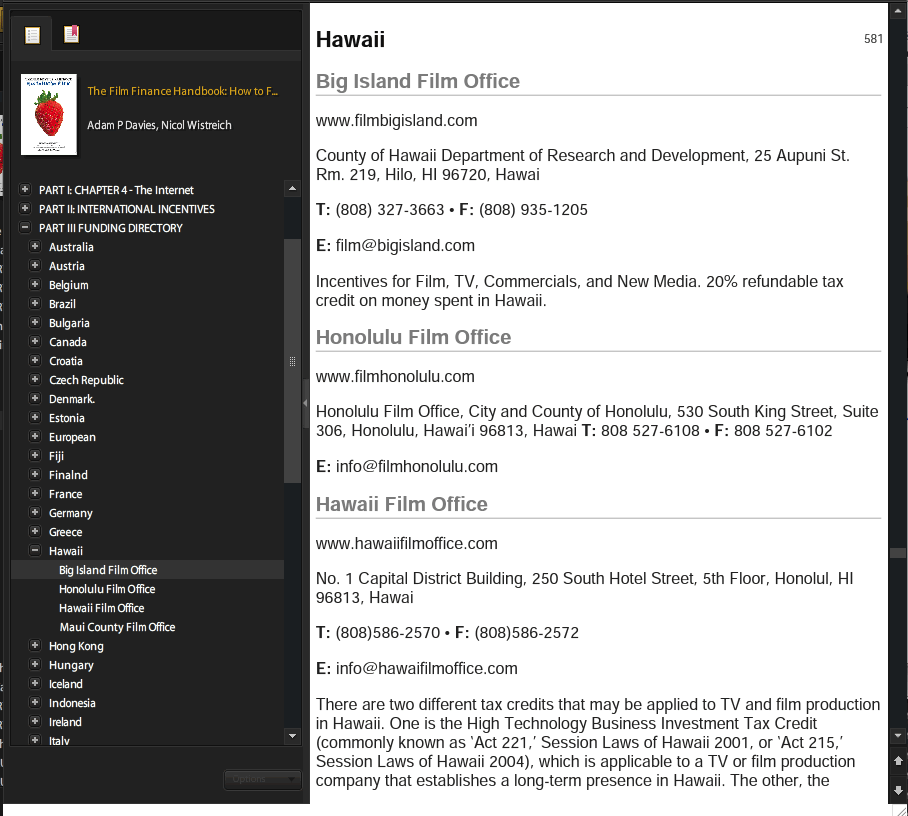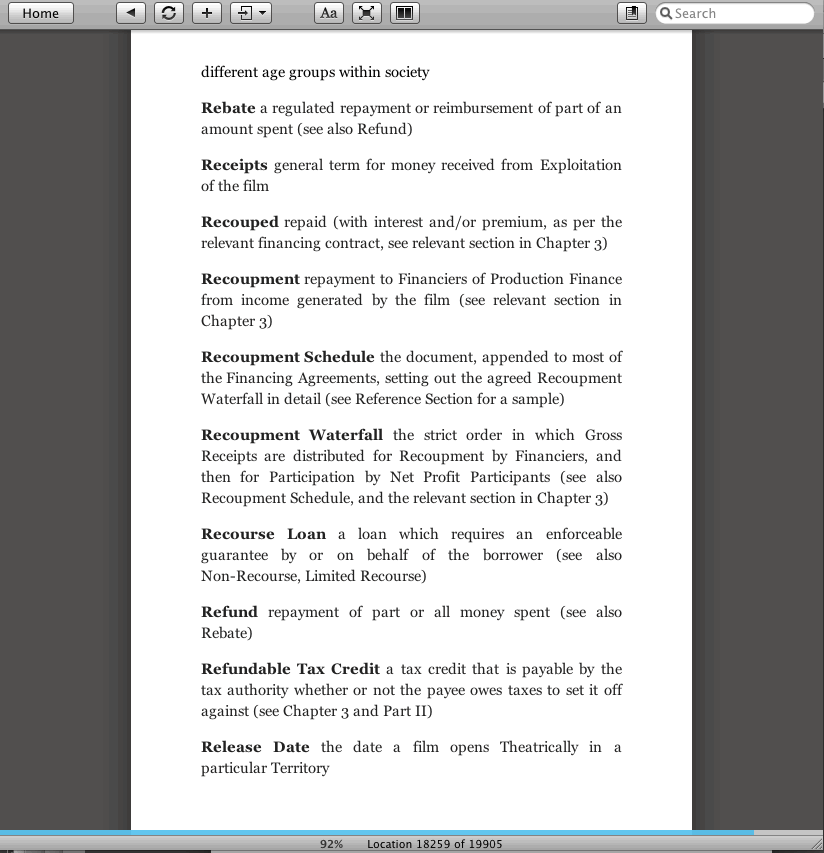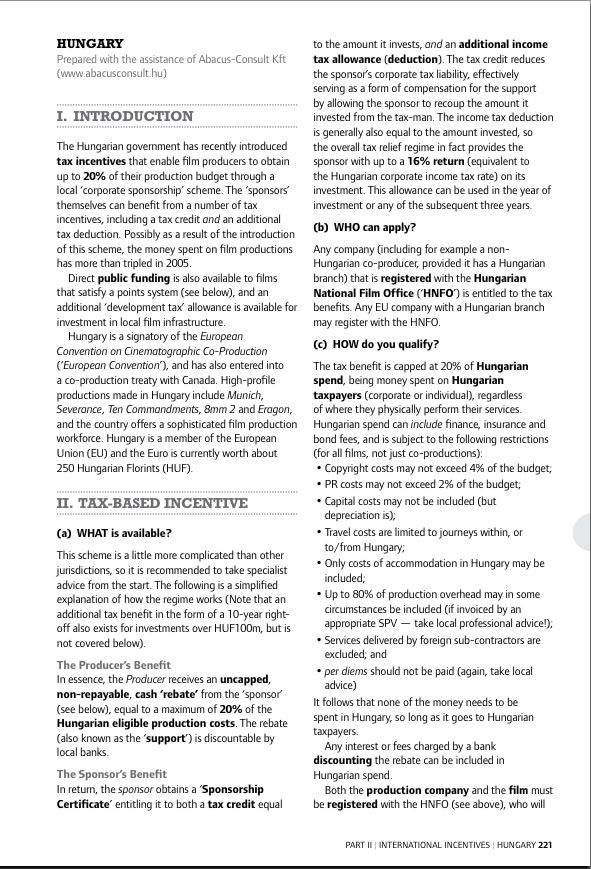Film Finance Handbook
By
Published
ISBN
9780955014321
Pages
468
From £269 (Amazon, Jan 2023)
Digital
£14 for ePub, PDF, Kindle (DRM-free)
The book is split into three parts:
Part I, Theory and Practice…
…takes you through all the aspects of independent film finance, and includes various case studies and interviews throughout:
- Chapter 1: Getting Started gives an overview of the film industry, with essential background information and advice on how to prepare yourself and your project in the best way to attract finance.
- Chapter 2: Low & Micro-budget Filmmaking looks predominantly at ways to reduce budgets for low and microbudget films - while still putting the maximum value onto the screen - through tips, interviews and case studies with independent filmmakers.
- Chapter 3: Production Financing describes in-depth all the various aspects of production financing. It explains the types of financier that tend to provide funding, what type of deal they want in return, how they need to interconnect with each other, and what needs to happen for the film to turn a profit. We cover step-by-step the entire range of film finance currently available, including Soft Money, Equity, Deferments, Pre-Sales, Gap, Sales Advances, Negative Pick-ups, EIS and Venture Capital, Sponsorship and Product Placement. We also illustrate the roles of the various other companies integral to the financing process, including Sales Companies, Distributors, Discounting Banks, and Completion Guarantors.
- Chapter 4: The Internet explores how tools, networks and services on the web collectively offer the independent filmmaker great power for financing, marketing and distributing their films, and some of the ideology which underpins these developments. We're pleased to say this chapter was talking about crowd-funding long before Kickstarter and IndieGoGo launched!
Part II, International Incentives…
…provides information on incentives for 50 countries, in many cases written together with local specialists. We cover all the popular countries in depth, and bring to your attention a number of others with attractive and interesting regimes.
Part III, Funding Directory…
…provides a full breakdown of 1,000 public funds available from over 300 organisations around the globe. Wherever possible, we include details on their criteria, objectives and (most importantly!) the amounts they are willing to provide.
Reference section…
…also provides
- 400-term glossary of financing and film business jargon
- Sample delivery schedule
- International co-production treaty table
- Recoupment schedule
- Table of financing contracts
- Further reading
- Internaitonal producer organisations
Case studies and interviews
Interviews and case studies with producers, financiers and filmmakers include (in order of appearance):

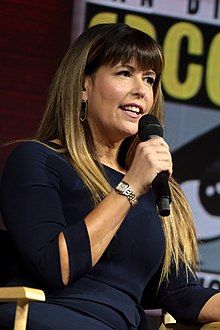
- Jeremy Thomas, Producer, Recorded Picture Company, Dream Machine
- Nik Powell (left), co-founder Virgin, Palace Pictures, Scala & head of NFTS
- Nicole Kassell, writer & director, The Woodsman
- Lance Weller, Head Trauma
- Wendy Bevan Mogg, short film producer
- Jan Dunne and Elaine Wickham, director & producer of Gypo, Ruby Blue
- Gus van Sant, director, Elephant
- Patty Jenkins (left), Writer/director, Monster
- Amanda Posey, producer, Fever Pitch
- Jon Williams, writer/director, Diary of a Bad Lad
- Neil Oseman, writer/director, Soul Searcher
- Alex Ferrari & Sean Falcon, Broken
- Chris Kentis & Laura Lau, Open Water
- Adrian Mead, Night People
- Alison Peebles, Afterlife
- Kenneth D Barker, Kingdom
- Gene Cajayou, The Debut
- Zack Coffman & Scott Di Lalla, Choppertown, the sinners
- Scott Pehl, Curiosity
- Susan Buice & Arin Crumley, Four Eyed Monsters
- Paul Andrew Williams, London to Brighton
- Mira Nair, director, Vanity Fair, Working with a studio
- Jacqueline Swanson, Checkout Girl, Product placement
- Roy Disney, former Chairman, Walt Disney Corp, the Studio
- Janey de Nordwall Silver Films, Business angels
- David Thompson, then head of BBC Films
- Jim Gilliam, producer, Brave New Films, co-founder Nation Builder
- Matt Hanson, producer, Swarm of Angels, co-founder OneDotZero
- Ashvin Kumar, the Forrest
How old is it?
This third edition book was first published in 2007 and reprinted with minor updates in 2008. Funding awards and tax regimes change all the time (even in the gap between finishing writing and getting the books back from the printers in 2007). Of the 460 printed pages to the book, over 200 are articles, guides, how-tos, case-studies, resources and interviews that should still be relevent. The other 260 pages are a mixture of info on film funds and legal incentives for different countries. Much fund information will have changed so we would advise - as ever - to check for the latest info before making any plans.
"The book is brilliant... should be mandatory reading for everyone in the industry"
Julian Friedman, agent and editor
"Film finance's definitive guide"
Peter James, producer & international bestselling author
"I highly recommend this book. An incredibly useful tool – it’s got everything in there"
Tessa Ross, exec producer 12 Years A Slave, Slumdog Millionaire, Four Lions, etc
"An indispensable guide"
BBC Film Network


